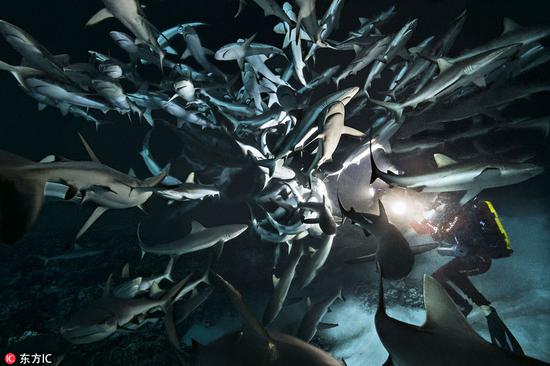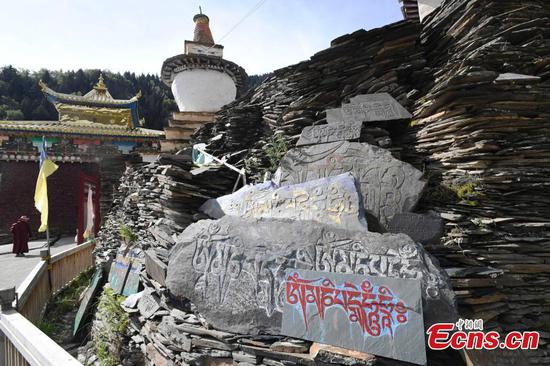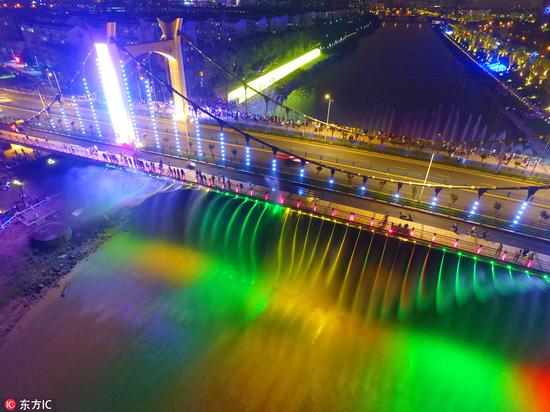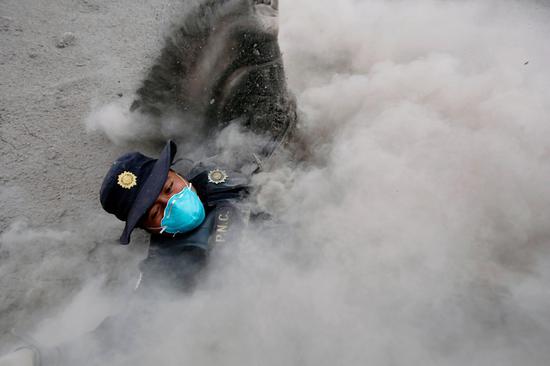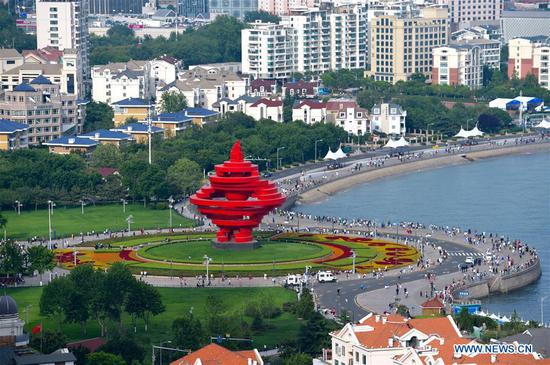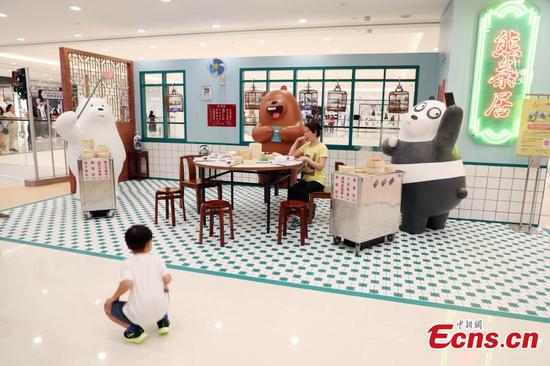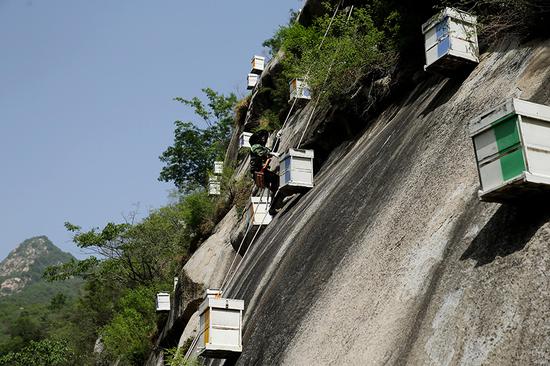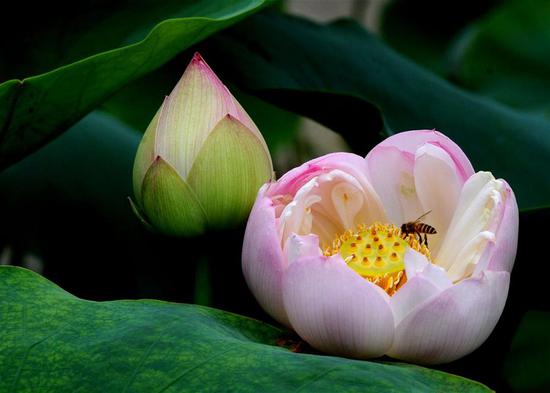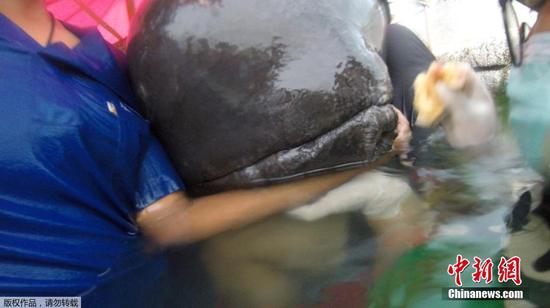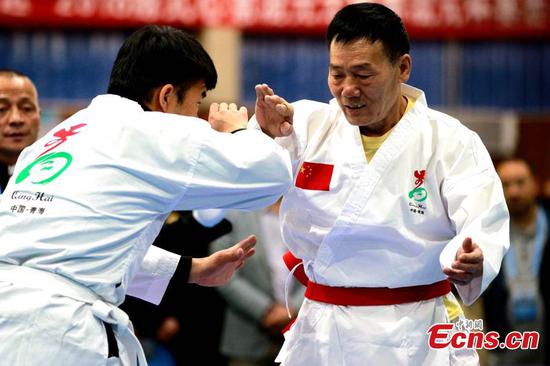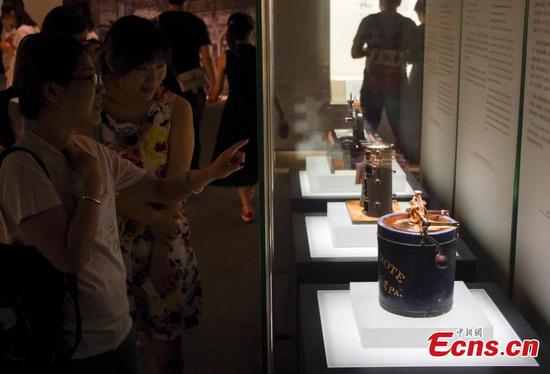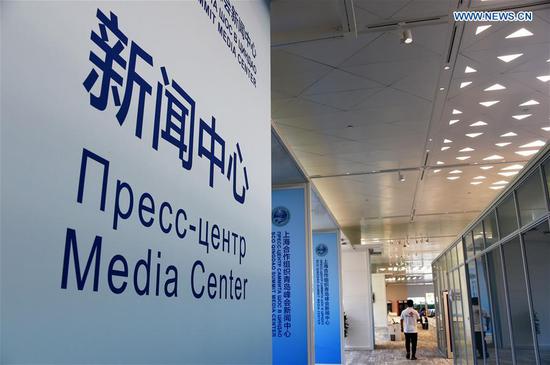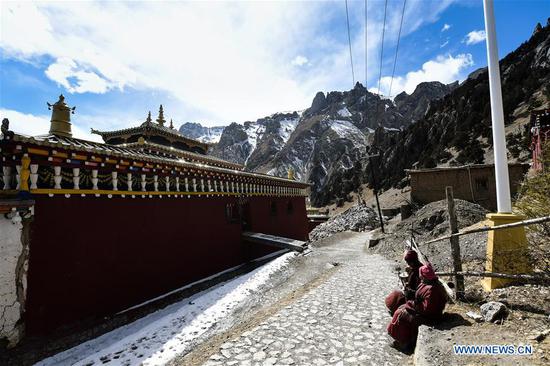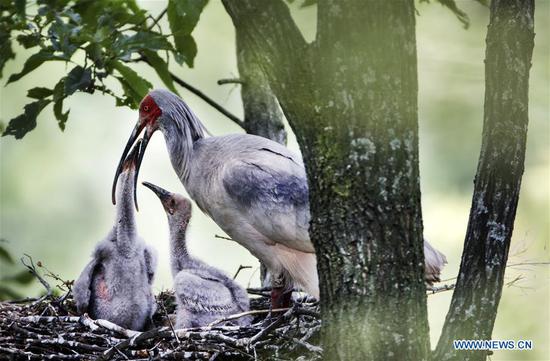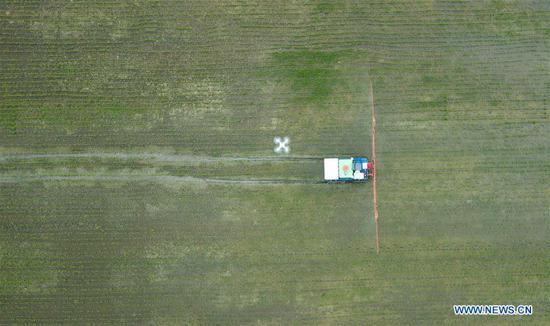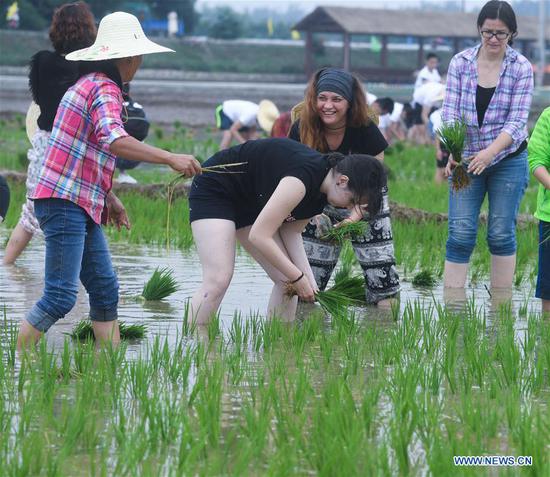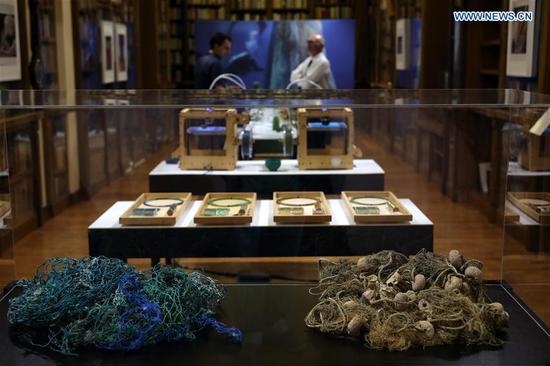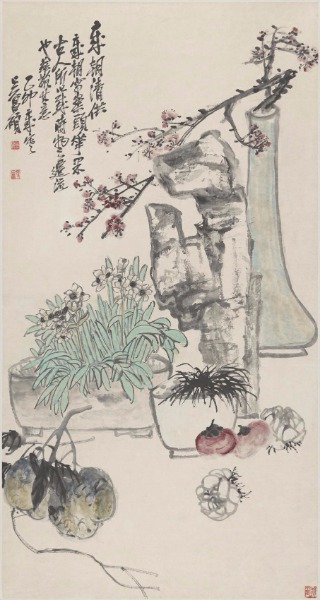
An exhibition of works by Chinese painting master Wu Changshuo marks the reopening of the Hall of Literary Glory (Wenhua Dian) in the Palace Museum in Beijing. The exhibition showcases Wu's paintings, calligraphy and seal-cutting works. Auspicious flowers are the most recognizable theme in Wu's paintings.(Photo provided to China Daily)
According to Nie Hui, a researcher of painting and calligraphy at the museum, auspicious flowers are the most recognizable theme in Wu's paintings.
"Each flower represents a spirit," Nie says. "He skilfully mixes a common aesthetic with a literati's taste through the flowers."
For example, his paintings range from those of plum blossom and orchids - typically embodying the spirit of the Chinese literati - to peonies and wisterias, which are widely favored by the general public.
"Wu is among the peak of Chinese literati painters and the brightest star in recent Chinese painting history," Nie says.
"Later, people had overwhelming praise for him. It's just like the flowering world under his paintbrush: It's a rain of blossoms, and the falling petals are of riotous profusion."
According to Ren Wanping, deputy director of the museum, who curated the exhibition, some sections are designed for the exhibition to not only display a panoramic review of Wu's lifetime achievements but also to explore how his artistic styles formed.
In one section, Wu's paintings are juxtaposed with some ancient painters' works to trace the origin of his inspirations.
Xu Wei, a Ming Dynasty artist famed for his bird-and-flower paintings, and Zhu Da, an early Qing Dynasty painter better known for his pseudonym Bada Shanren, are among the predecessors who influenced Wu.











